
what you'll learn...
overview
In this page, the following are explained.
• constructing a bisector to a line segment
• constructing a perpendicular through a point on a line
• constructing a perpendicular to a point not on a line
• constructing a bisector to a given angle
Perpendicular Bisector to a Line Segment
A rhombus is "A four sided figure with all sides equal".

A rhombus has the following properties.
• All sides are equal (and parallel)
• the diagonals perpendicularly bisect
• opposite angles are equal
• adjacent angles are supplementary
"Diagonals of rhombus perpendicularly bisect" This geometrical properties help to construct a perpendicular bisector to a line.
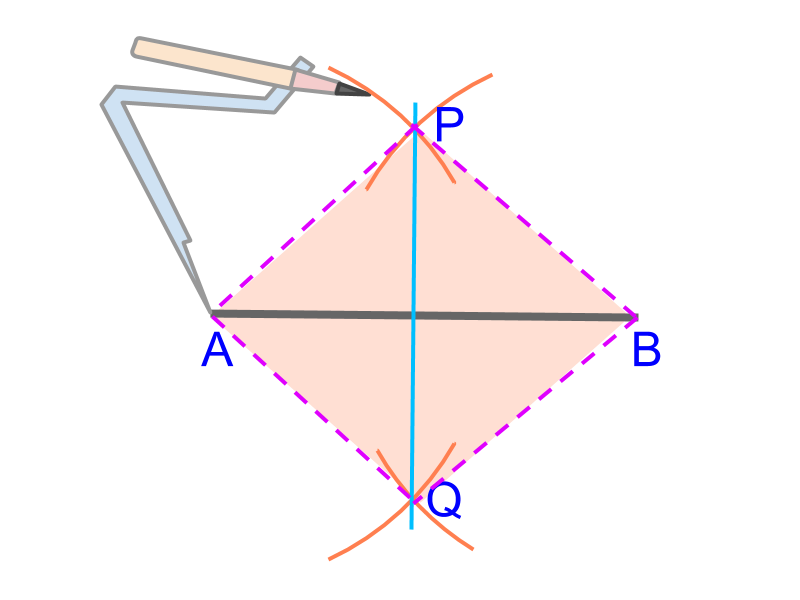
Given line segment ¯AB¯¯¯¯¯¯AB. The perpendicular bisector ¯pq¯¯¯¯pq is to be constructed.
• Take a compass
• fix a random distance between tips
• construct arcs from position AA above and below ¯AB¯¯¯¯¯¯AB
• construct arcs from position BB above and below ¯AB¯¯¯¯¯¯AB
• the intersecting points are PP and Q.
Note that the distance between tips of the compass is not modified and so, the sides ¯AP, ¯PB, ¯BQ, and ¯QA form a rhombus. From the property of a rhombus, the diagonals ¯AB and ¯PQ perpendicularly bisect each other.
Note for curious students: It can be a kite, with ¯AB as minor diagonal. Property of a kite, the major diagonal ¯PQ bisects minor diagonal ¯AB.
Bisecting a Line Segment : Use a compass to mark a rhombus with the given line segment as one of the diagonals. The perpendicular bisector is the other diagonal.
Perpendicular through a point on a line
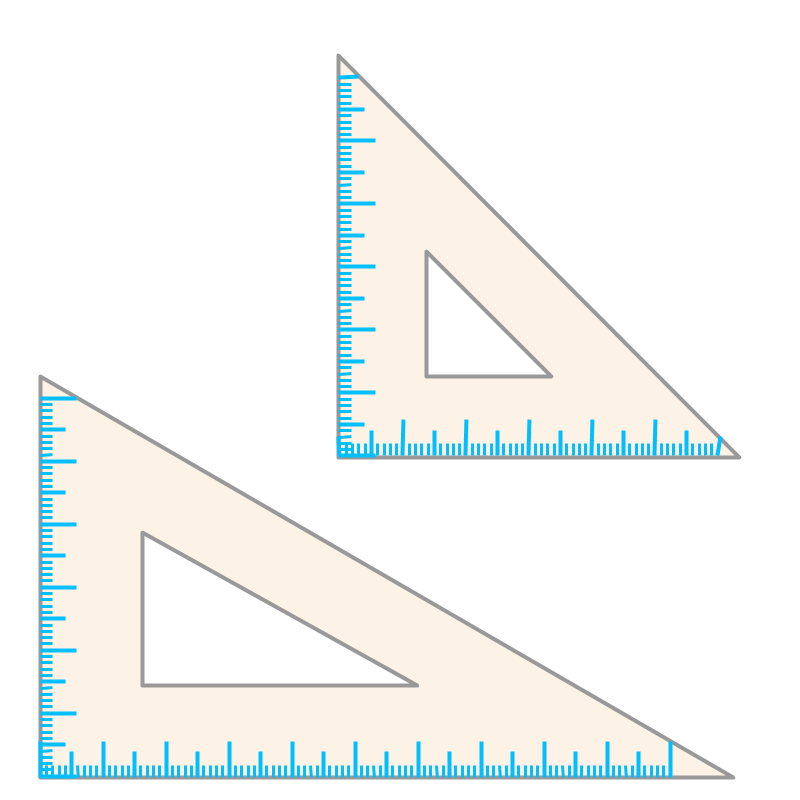
Set squares or set triangles have sides or edges that are perpendicular.

Given line ¯AB and a point P on the line. Place the vertex of perpendicular edges of a set-square with one edge on the given line ¯AB. Construct the line along the other perpendicular edge of the set-square.
Perpendicular through a point on a line : Use the perpendicular edges of a set square, one edge on the given line and the perpendicular-vertex on the given point. Construct a line along the other perpendicular edge.
Some alternate methods can be used to construct a perpendicular through a point on a line.
• method to construct perpendicular bisector using a compass
• method to measure 90∘ angle using a protractor
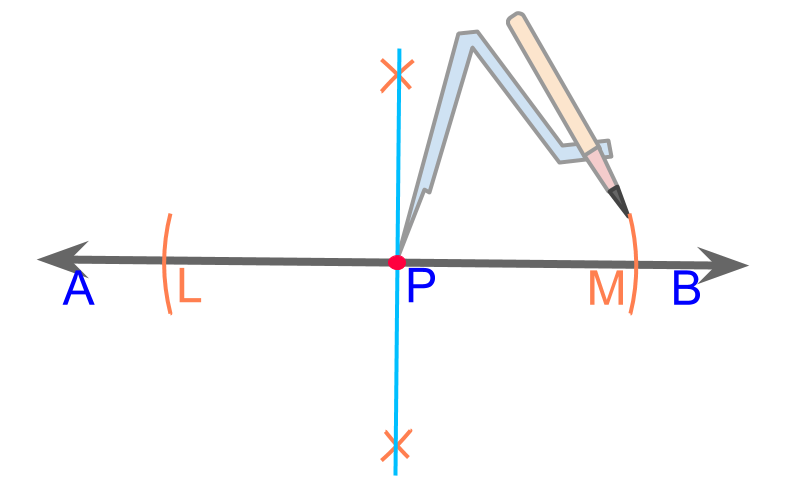
Perpendicular through a point on a line : Use a compass to mark points L and M on the line that are in equal distance from the given point P. Construct the perpendicular bisector of ¯LM.
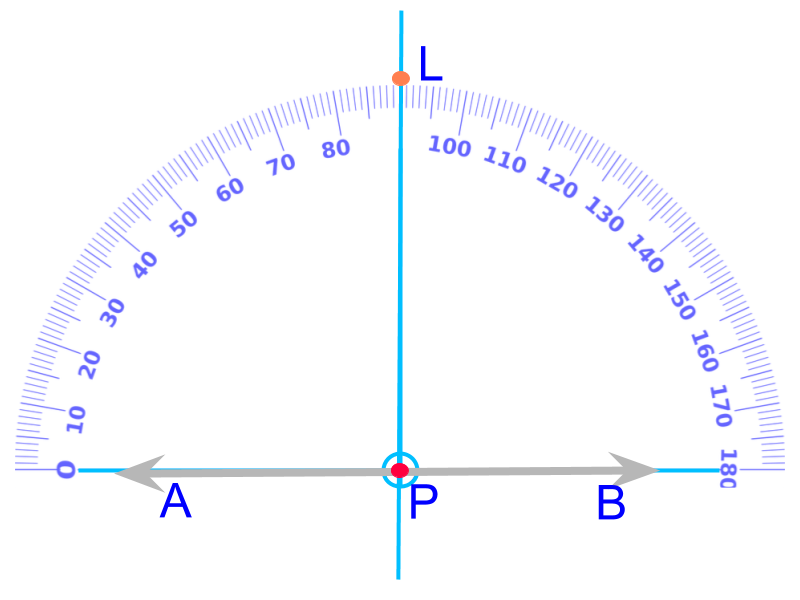
Perpendicular through a point on a line : Place the protractor with origin on the given point and the base-line on the given line. Mark a point on 90∘ angle and draw a line through the given point and the marked point.
Perpendicular to a point not on a line
Set squares can help to construct a perpendicular to a line through a point outside the line.
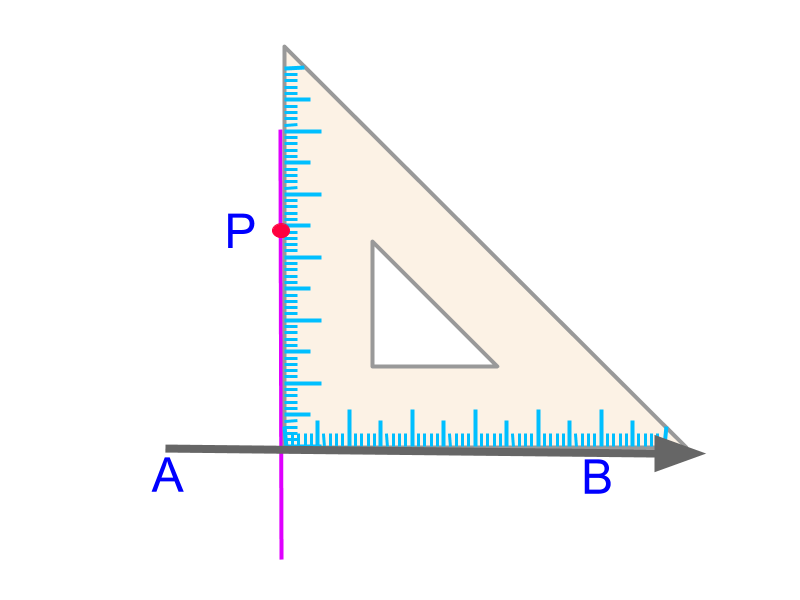
Perpendicular to a Point : Use the perpendicular edges of a set square, one edge on the given line and the other edge on the given point. Construct a line along the other perpendicular edge.
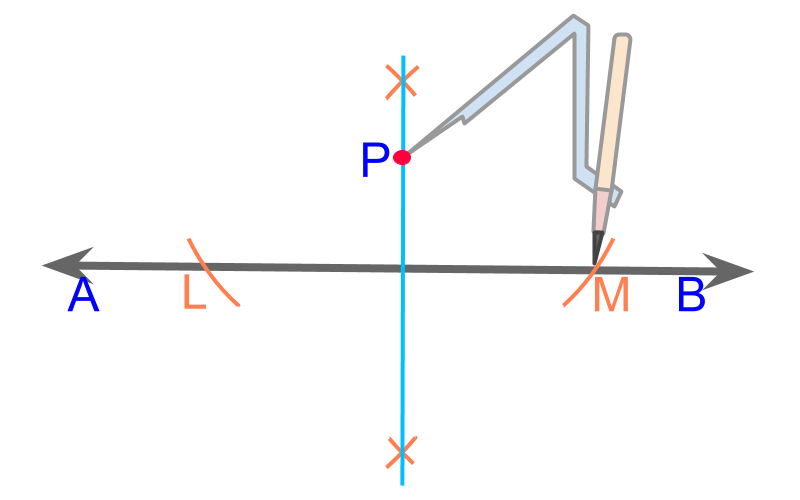
Perpendicular to a Point : Use a compass to mark points L and M on the line that are in equal distance from the given point P. Construct the perpendicular bisector of ¯LM.
Bisecting an angle
A kite is a quadrilateral with two pair of equal and adjacent sides.

A kite has the following properties
• two pair of equal sides
• major diagonal perpendicularly bisects the minor diagonal. the diagonal that divides the kite into two congruent triangles is called major. The other diagonal is the minor diagonal.
• major diagonal bisects the angles at the vertices
• two equal opposite angles and two unequal opposite angles -- all sum up to 360∘
The geometrical property "major diagonal of a kite bisect the angles at both vertices" can be used to bisect a given angle.
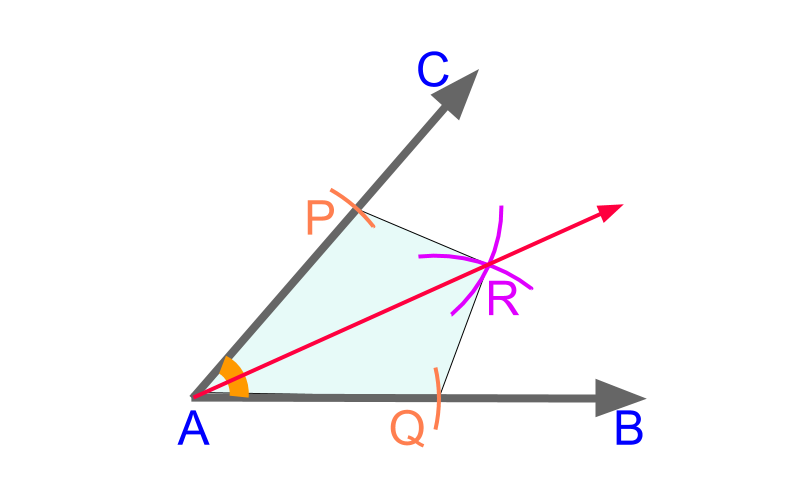
Given angle ∠BAC, a kite AQRP is formed.
• With an arbitrary measure on compass, mark points P and Q from the point A.
• With another arbitrary measure on compass, construct arcs from points P and Q. These two arcs cut at point R.
The quadrilateral AQRP is a kite and the line ¯AR is the major bisector of angle ∠BAC.
Bisecting an Angle : Using the two rays of the angle, create a kite such that the major diagonal bisects the angle.
summary
Bisecting a Line Segment : Use a compass to mark a rhombus with the given line segment as one of the diagonals. The perpendicular bisector is the other diagonal.
Perpendicular through a point on a line : Use the perpendicular edges of a set square, one edge on the given line and the perpendicular-vertex on the given point. Construct a line along the other perpendicular edge.
Perpendicular through a point on a line : Use a compass to mark two points on the line that are in equal distance from the given point. Construct the perpendicular bisector between the two marked points.
Perpendicular through a point on a line : Place the protractor with origin on the given point and the base-line on the given line. Mark a point on 90∘ angle and draw a line through the given point and the marked point.
Perpendicular to a Point : Use the perpendicular edges of a set square, one edge on the given line and the other edge on the given point. Construct a line along the other perpendicular edge.
Perpendicular to a Point : Use a compass to mark points two points on the line that are in equal distance from the given point. Construct the perpendicular bisector between the two marked points.
Bisecting an Angle : Using the two rays of the angle, create a kite such that the major diagonal bisects the angle.
Outline
The outline of material to learn "Construction / Practical Geometry at 6-8th Grade level" is as follows.
Note: click here for detailed outline of "constructions / practical geometry".
• Four Fundamenatl elements
→ Geometrical Instruments
→ Practical Geometry Fundamentals
• Basic Shapes
→ Copying Line and Circle
• Basic Consustruction
→ Construction of Perpendicular Bisector
→ Construction of Standard Angles
→ Construction of Triangles
• Quadrilateral Forms
→ Understanding Quadrilaterals
→ Construction of Quadrilaterals
→ Construction of Parallelograms
→ Construction of Rhombus
→ Construction of Trapezium
→ Construction of Kite
→ Construction of Rectangle
→ Construction of Square